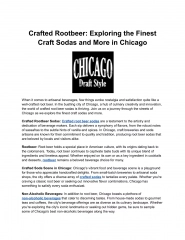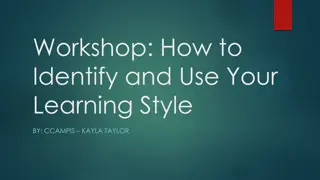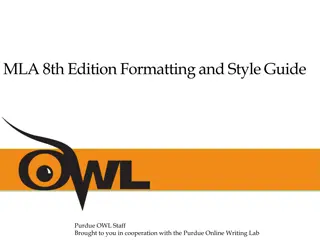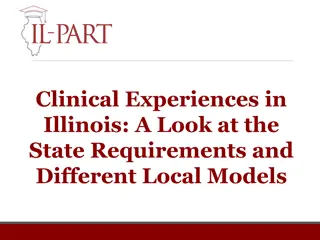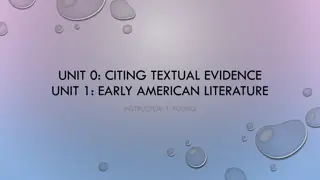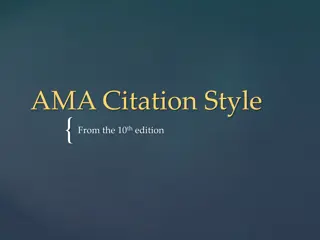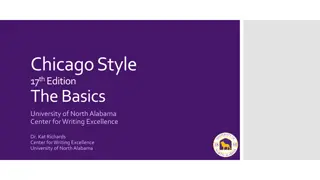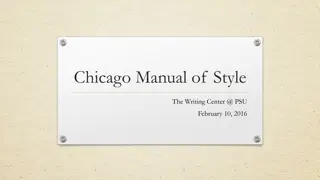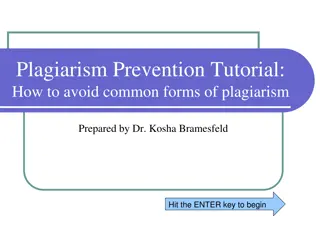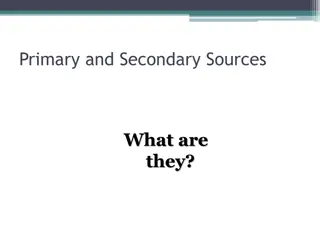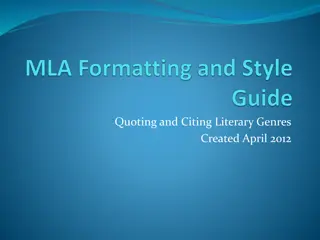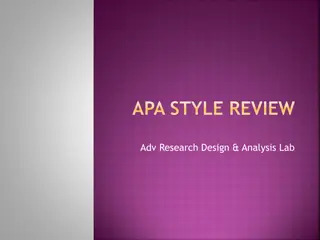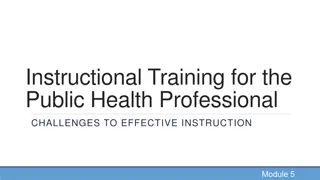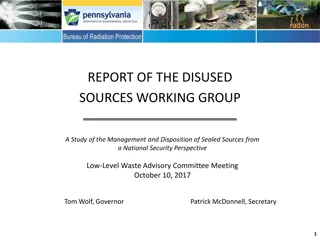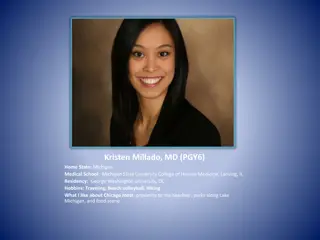Understanding the Importance of Citing Sources in Chicago Style
Citing sources in Chicago Style (17th edition) is crucial to credit authors, avoid plagiarism, and provide readers with access to your research sources. This guide covers why to cite, when to cite, citation styles, Chicago Style notes and bibliography, in-text and endnotes, and creating a bibliography following alphabetical order.
Download Presentation

Please find below an Image/Link to download the presentation.
The content on the website is provided AS IS for your information and personal use only. It may not be sold, licensed, or shared on other websites without obtaining consent from the author. Download presentation by click this link. If you encounter any issues during the download, it is possible that the publisher has removed the file from their server.
E N D
Presentation Transcript
CITING SOURCES Chicago Style (17th edition): Notes & Bibliography McMaster University Library
WHY CITE? to distinguish your contributions from those of others to document sources used to credit authors of the works that you are using to support your analysis to put your interpretations into context to help readers find the sources used to provide additional sources for further study to trace your research to avoid plagiarism A question mark in a speech bubble with quotes around it.
WHEN TO CITE When the work or idea of another person is Quoted Paraphrased Summarized Influential
CITATION STYLES Purpose: Examples: establishes a standard of writing and documentation within a particular field APA MLA Chicago Vancouver Harvard etc. uniform style helps readers scan references quickly for key points and findings encourages full disclosure of essential information
CHICAGO STYLE: NOTES & BIBLIOGRAPHY Cover of the Chicago Manual of Style, 17th edition (2017) Cover of Citation Guide for Business Citation Guide for Business includes formatting rules for Title Page Contents Text Appendix(es) Notes Bibliography + citation examples for frequently used sources Official CMOS 17 (2017) Available via University Library website: library.mcmaster.ca Citation Guide for Business
NOTES: IN-TEXT + ENDNOTES 1. Complete endnote form (1st citing) 2. Shortened endnote form (subsequent citing). Each time a source is used in the text, it must be cited with a superscripted note number. The specific details of the sources cited in the text will be listed in numerical order on a separate Notes page near the end of the paper (i.e., endnotes)
BIBLIOGRAPHY lists all the sources used to write your paper entries are arranged in alphabetical order according to the first word in each citation (i.e., author s name, or first word in title if there is no author) includes a single entry for each source, regardless of how many times it has been cited in the paper
ENDNOTE & BIBLIOGRAPHY DIFFERENCES ENDNOTE BIBLIOGRAPHY Auletta, Ken.Googled: The End of the World As We Know It. New York: Penguin Press, 2009. 1. Ken Auletta,Googled: The End of the World As We Know It (New York: Penguin Press, 2009), 10. first line of each entry flush to left margin, with subsequent lines indented (i.e., hanging indent) first line of each note indented, with subsequent lines flush to left margin author: given name, surname commas separate citation elements specific location in source included (e.g., page) author (inverted): surname, given name periods separate citation elements specific location in source not included
CITATION ELEMENTS & SOURCE TYPES Cover of Book entitled Influence: The Psychology of Persuasion, Revised edition by Robert B. Cialdini Book citations require ... Name of Author(s) Book Title [in italics] Place of Publication Publisher Publication Date URL/DOI & Access Date (if online) Citation Guide for Business identifies all the citation elements (& formatting) required by Chicago style for a variety of sources (e.g., articles, books, images, podcasts, reports, videos, web pages, etc.) Journal article citations require ... Name of Author(s) Article Title [in quotes] Journal Title [in italics] Volume Issue Page Number(s) Publication Date URL/DOI & Access Date (if online) Journal article image of a paper entitled The Consumer Behavior of Luxury Goods: a Review and Research Agenda also includes endnote and bibliography examples for each source type!
GET HELP E-mail: library@mcmaster.ca Phone: 905-525-9140 ext. 21359 Business Librarian ext. 22077 Mills Service Desk Face to Face: Drop by Mills Service Desk (1st floor), Monday to Friday or book an appointment Live Chat/Text: https://library.mcmaster.ca/justask/


